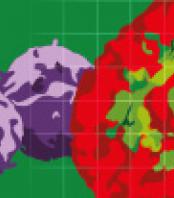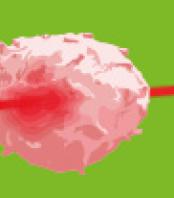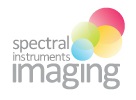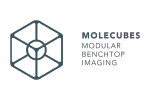Agilent provides xCELLigence impedance-based, label-free, real time cell analysis system and NovoCyte flow cytometers.

Automated microscopy and Spatial Proteomics
Real-time, label free cell analysis
Nano and micro particle analysis

Accelerate to discover
Related topics
Automatic, Real Time Acquisition of Bioluminescent Kinetic Curves

Jun 27, 2024
Watch this pre-recorded webinar with Dr. Andrew Van Praagh to learn how our new Aura software feature —Kinetics—...
Theranostics: From Mice to Men and Back

Jun 25, 2024
Recorded webinar
Presenters: Prof. Dr. Ken Herrmann and Prof. Dr. Katharina Lückerath – Moderator: Hannah Notebaert
Orion 2024 AACR poster: 17-plex single-step stain and imaging of cell Lung Carcinoma

Jun 21, 2024
RareCyte Orion is a benchtop, high resolution, whole slide multimodal imaging instrument. A combination of quantitative...
New release now available: Cytek Amnis AI v3.0 Software

Jun 17, 2024
The new Cytek Amnis AI v3.0 image analysis software features an integrated transfer learning algorithm, an option to...
Cytek webinar: Imaging Flow Cytometry for Chromosomal Assessment in Hematological Malignancies

Jun 7, 2024
In this webinar, we will describe a new innovative approach we developed that resolves these limitations. The method...
Hypoxia in the Tumor Immune Microenvironment (TIME)

Jun 6, 2024
Thursday, 11 July 2024, 16:00 CET | 10:00 EST
Zaver M. Bhujwalla, PhD
X-RAD 320 for irradiation therapy during quantifying study for in vivo collagen reorganization

Jun 5, 2024
Quantifying in vivo collagen reorganization during immunotherapy in murine melanoma with second harmonic generation...
Use of MRI and microCT to evaluate gene therapy for the treatment of discogenic back pain

Jun 4, 2024
MRI images were obtained using the 9.4T Bruker BioSpec system, equipped with 40 mm 1H quadrature volume resonator, and...

Jul 20, 2016
Virus infection of a host cell typically includes the selective suppression of host cell functions and redirection of resources towards viral replication and assembly, ultimately leading to host cell lysis and dissemination of new virus. While host cell rounding, detachment from the plate surface and/or lysis are readily detected by real-time impedance monitoring, more subtle changes in host cell morphology occurring during earlier phases of viral infection can also be monitored. This sensitivity to virus-induced changes in host cell morphology and behavior makes the xCELLigence technology very well suited for a wide array of virology applications, including: differentiating between virus strains/isolates based on the kinetics of replication and cytopathic effect, determining viral titers, determining neutralizing antibody titers, and studying virus-host cell interactions using physiologically relevant cell types that cannot typically be used because they aren’t compatible with traditional assay techniques.
Evaluating the relative fitness of different virus strains/isolates, and determining the identity of a virus isolate can involve a large number of techniques, including: ELISA, PCR, RT-PCR, Western blotting, plaque assays, immunofluorescence, etc. Owing to its ability to kinetically characterize a virus-induced cytopathic effect, xCELLigence real-time cell analysis (RTCA) can be used in place of, or in addition to, some of these traditional assays for characterizing virus fitness and/or identity.
RTCA-based kinetic comparison can be used for assessing the relative fitness/virulence of different virus isolates/strains, or to help identify a virus using RTCA traces from known standards.
Key Benefits:
- Quantify virus titer: An automated, simple, reduced workload alternative to plaque assays.
- Evaluate the fitness of different strains/isolates: The relative fitness of different viruses (natural isolates, engineered mutants, etc.) are readily evaluated using the onset and kinetics of virus-mediated cytopathic effects.
- Determine/confirm virus identity: Real-time kinetic traces of virus-mediated cytopathic effects can be compared to those of characterized viruses to help determine/confirm the identity of a virus.
- Quantify neutralizing antibody titer: Because the time of cytopathic effect onset correlates with neutralizing antibody concentration, standard curves are easy to generate. These can be used for quantifying neutralizing antibody in samples of unknown concentration.
- Rapid assay optimization: Quickly identify the optimal viral titer and assay time point for subsequent screening of inhibitory compounds, neutralizing antibodies and neutralizing serums.
Related technologies: Real-time, label free cell analysis
Brand profile
Agilent provides xCELLigence impedance-based, label-free, real time cell analysis system and NovoCyte flow cytometers.
More info at:
www.aceabio.com